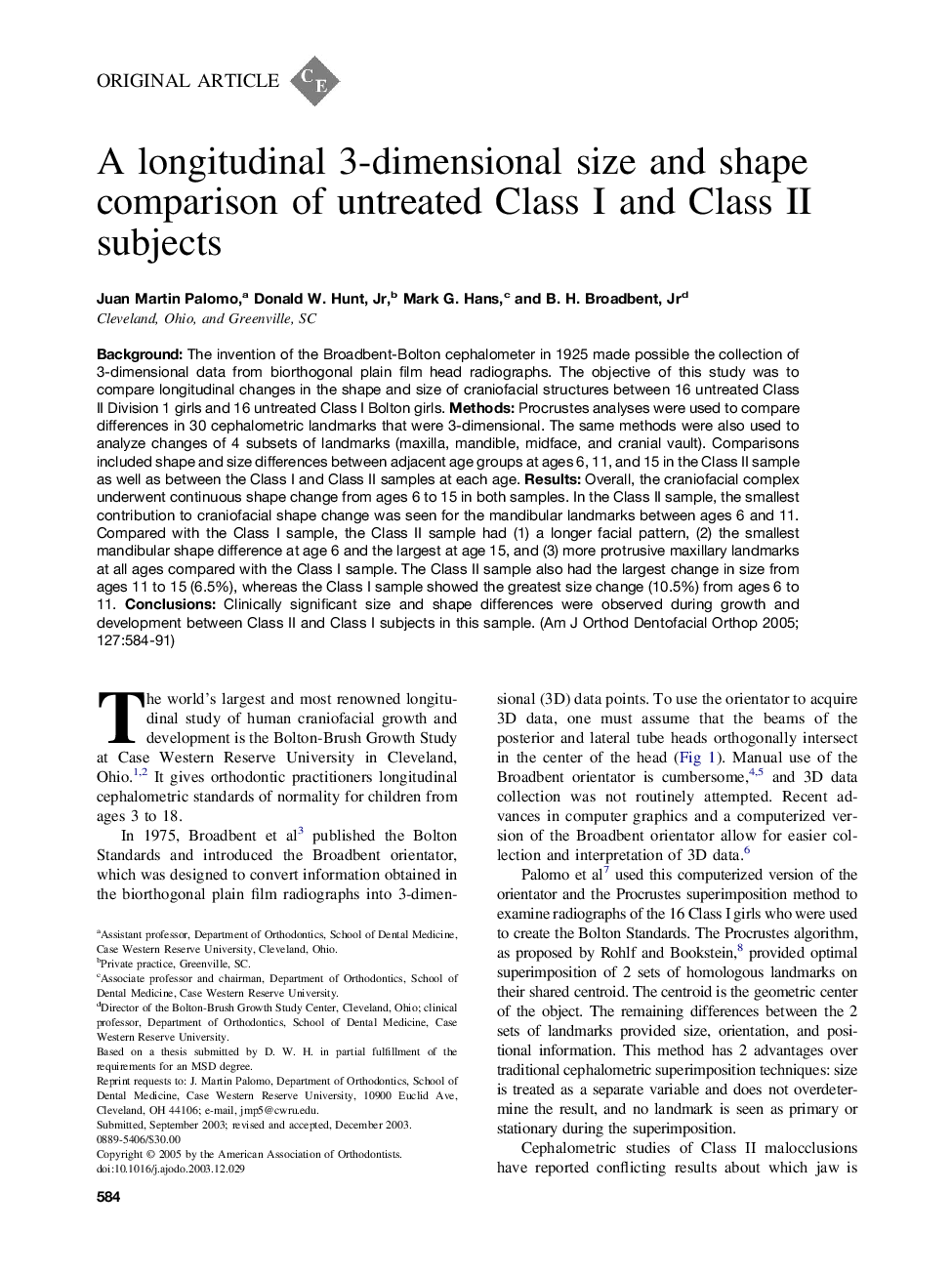| Article ID | Journal | Published Year | Pages | File Type |
|---|---|---|---|---|
| 9992924 | American Journal of Orthodontics and Dentofacial Orthopedics | 2005 | 8 Pages |
Abstract
Background: The invention of the Broadbent-Bolton cephalometer in 1925 made possible the collection of 3-dimensional data from biorthogonal plain film head radiographs. The objective of this study was to compare longitudinal changes in the shape and size of craniofacial structures between 16 untreated Class II Division 1 girls and 16 untreated Class I Bolton girls. Methods: Procrustes analyses were used to compare differences in 30 cephalometric landmarks that were 3-dimensional. The same methods were also used to analyze changes of 4 subsets of landmarks (maxilla, mandible, midface, and cranial vault). Comparisons included shape and size differences between adjacent age groups at ages 6, 11, and 15 in the Class II sample as well as between the Class I and Class II samples at each age. Results: Overall, the craniofacial complex underwent continuous shape change from ages 6 to 15 in both samples. In the Class II sample, the smallest contribution to craniofacial shape change was seen for the mandibular landmarks between ages 6 and 11. Compared with the Class I sample, the Class II sample had (1) a longer facial pattern, (2) the smallest mandibular shape difference at age 6 and the largest at age 15, and (3) more protrusive maxillary landmarks at all ages compared with the Class I sample. The Class II sample also had the largest change in size from ages 11 to 15 (6.5%), whereas the Class I sample showed the greatest size change (10.5%) from ages 6 to 11. Conclusions: Clinically significant size and shape differences were observed during growth and development between Class II and Class I subjects in this sample.
Related Topics
Health Sciences
Medicine and Dentistry
Dentistry, Oral Surgery and Medicine
Authors
Juan Martin Palomo, Donald W. Jr, Mark G. Hans, B.H. Jr,
